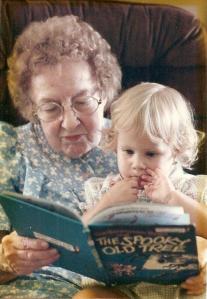When writing teachers, agents, and editors plead with writers to “show don’t tell,” beginning writers have no clue what this means. No writer is born with such knowledge. I had heard “show don’t tell” in workshops and conferences, and I had read it in books. It was through Author John Foxjohn’s coaching that the lesson finally embedded itself in my brain. In the spirit of watch one, do one, teach one, I pass along this hard-learned lesson to you.
 In fiction writing, showing is preferred over telling, because showing allows the reader to step into the character’s life to experience the story as if first-hand. Readers enjoy vicariously living in the story, seeing the world through fresh perspectives. In the finest fiction, showing immerses the reader deeply into the character’s thoughts, feelings, attitude, and skin. This is called deep point of view.
In fiction writing, showing is preferred over telling, because showing allows the reader to step into the character’s life to experience the story as if first-hand. Readers enjoy vicariously living in the story, seeing the world through fresh perspectives. In the finest fiction, showing immerses the reader deeply into the character’s thoughts, feelings, attitude, and skin. This is called deep point of view.
To craft this experience for the reader involves cutting away the barriers between the reader and the character by showing the reader how it feels to be the character. ‘Telling’ words, such as words that label feelings, separate the reader from the story by reminding the reader that he is reading about something instead of experiencing it.
Let’s examine the labeling words that indicate the writer is telling instead of showing.
SHOWING OR TELLING IN POINT OF VIEW
When revealing the point of view character’s thoughts, feelings and physical sensations, beware of using these telling words. The following examples present the telling words used to label the senses and feelings of the point-of-view character.
He thought (or he wondered) who died and made her boss.
Instead write what he thought or what he wondered. The reader is already in the character’s point of view, so drop the label and show his thought.
Who died and made her boss?
He felt (or he could feel) tingling pain shoot up his arm.
Tingling pain shot up his arm.
He saw (or he could see) the car veer toward him.
The car veered toward him.
He sensed (or he could sense) the hostess was not expecting him, because she brought out a place setting and hastily added it to the table.
The hostess brought out a place setting and hastily added it to the table.
He smelled (or he could smell) the acrid stench of burning hair assault him.
The acrid stench of burning hair assaulted him.
He heard (or he could hear) church bells clanging eight times.
Church bells clanged eight times.
He tasted (or could taste) smooth chocolate melt on his tongue.
Smooth chocolate melted on his tongue.
Notice how simple and direct the showing sentences are? They feel active and alive instead of being described at a distance. You can hunt for the telling words (sensory labels) in your manuscript through the FIND or SEARCH feature of your software. Root them out!
WHEN TELLING WORKS BEST
There are times when telling works better than showing.
When dialogue REPEATS information given earlier in the story, retelling it will bore the reader. On the second encounter of characters discussing the same stuff—summarize. The reader would have skipped over it anyway. However, if the retelling offers a peculiar slant or lie about the events then play it out for the reader so the reader sees the retelling as a lie or misrepresentation. Otherwise tell it in summary.
When the content of the dialogue would BORE the reader, then summarize. For example:
Dear Mrs. Klinghoffer wedged herself into the bus seat beside sixteen-year-old Kenny and described her gall bladder surgery for the entire two-hour trip to Boston.
No matter how important it is that Mrs. Klinghoffer spoke to Kenny, who needs to relive the details of that conversation? Yes, this is telling, but the reader will thank you for not showing the entire gall bladder monologue. This also holds true for describing large bridges of time or place between events. If all that happened between one scene and another is that the hero drove to work, have mercy on the reader and summarize with something like–Later, when he arrived home….
While the differences between telling and showing appear minor, these differences either keep the reader at arm’s length from the story, or lure him into the world you have created. Make magic.
Enjoyed your detailed blog, Joni… I’ve lapsed into telling in my first work (HnH) in places, or so a tough reviewer informed me. But I wrote in a first-person POV, and wasn’t keen to push readers into any other perspective, and perhaps disorient them. Does that strike you as another good ’nuff reason? Cheers, -rn
Dear Rian Nejar,
In first-person stories telling works. See Janet Evanovich’s Stephanie Plum series. Lotsa telling. Works just fine. It has become her style.